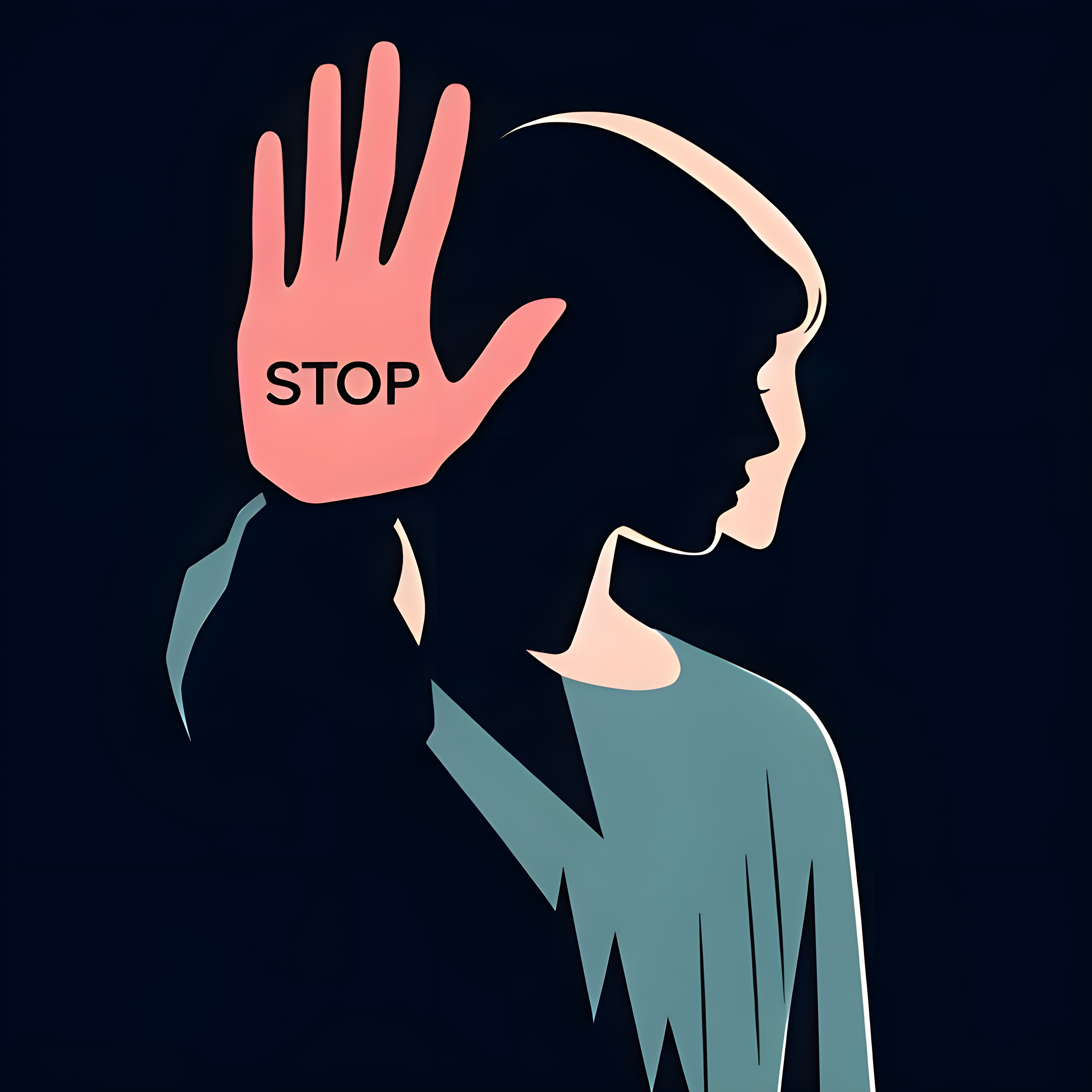Table of Contents
ToggleIntroduction
Every day, we come across incidents of rape, sexual assault, molestation, cyber bullying and other forms of sexual violence. We have become so used to such incidents that they don’t shatter our souls anymore. But once in a while, the collective conscience of the society compels it to view it as a crime against humanity at large. Candles are lit, marches are organised, slogans are raised, tears are shed, strikes and protests are organised and then ultimately, this activism withers away. At the end, the confused morality of the society, slyly whispers into the ears of this collective conscience, “Until we meet again.” The conscience compromises and concedes to the fact that it will again rise, shout and cry after the occurrence of another diabolic incident. It is unfortunate that this so called progressive and technologically advanced society has failed to judge the ultimate cause behind sexual violence. Sexual violence is not just the culmination of a crime but it is a societal attitude that is embedded in the very fabric of people’s mental framework. One underlying cause behind this attitude is the normalization and acceptance of the porn industry.
From Condonation to Acceptance
Media and the entertainment industry have played a significant role in determining the course of modern civilization. Initially, it might have taken the form of harmless entertainment, but over decades, nudity, obscenity and sexual promiscuity have become the hallmark of the entertainment industry. In the wake of such content, the legal debate around the acceptability of such portrayal has also occupied the courts. The discussion around privacy, bodily autonomy and pleasure has played a significant role in normalizing pornographic content. Even the feminists, who vociferously condemn any sort of violence against women, are divided on this issue, with one flank being pro-pornography.
In the middle of the 20th century, the word ‘obscenity’ occupied the centre stage of this discussion until the Miller Test was laid down in Miller v. California.[1] While determining obscenity, it gave importance to the contemporary community standards, offensive content and lack of literary, artistic, political and scientific value. The remnants of decency compelled the judiciary to not explicitly recognise pornographic content. Since the ubiquity of internet, the porn industry has spread its roots deep into the normal web and the dark web. It has become next to impossible to curtail this menace as it is not bound by the limitations of boundaries or legalities. The narrative around such content has metamorphosed and from being viewed as degeneracy, it has been elevated to the pedestal of freedom of expression. Even women have gone to the extent of writing that pornography is about one’s choice and consent and it does not harm anyone.[2]
The US Supreme Court in Robert Eli Stanley v. State of Georgia,[3] has held that even though States retain the power to regulate obscenity, that power does not extend to mere possession by the individual in the privacy of his own home. This Supreme Court of India relied on this decision in K.S. Puttaswamy v. Union of India.[4] Prima facie, this seems to be fair that the State’s paternalism must not extend to the private spheres of its citizens. But as a result of this justification, states have become lackadaisical in regulating pornography in toto. Even though Sections 67A and 67B of the IT Act prohibit such content, the Indian state has largely been unsuccessful in curbing this problem. The judiciary’s dilemma can be fathomed by a recent controversial decision of the Karnataka High Court, wherein the court initially said that private viewing of even child pornography was also not an offence. Fortunately, the court was humble enough to recall this order.[5]
Therefore, it can be said that earlier there was some resistance against this industry. But now, the discussion has completely changed and from the citizens to the State, all stakeholders of the society are confused as to what should be the fate of such content and to what extent can it be regulated.
Dehumanization of Women
Amid the surface-level discussion of choice and consent, coercion, manipulation and force have completely been ignored. The porn industry is infamous for perpetrating violence against porn actors, especially female actresses. The accounts of these actresses reveal how they are forced to take part in extremely painful and inhuman scenes.[6] Furthermore, data reveals that consumers develop extremely abominable fantasies that include forceful, homosexual, incestuous, bestial and paedophilic intercourse. Women are portrayed as objects being thrashed by multiple men. Some categories promote sadomasochistic abuse of women.
Dianna E.H. Russell has carried out a study that explores the link between pornography and sexual violence. The author writes, “In order for rape to occur, a man must not only be predisposed to rape, but his internal inhibitions against acting out rape desires must be undermined.” The author theorises that pornography either intensifies the predisposition in other men already so predisposed or it undermines some men’s internal and social inhibitions against acting out their rape desires.[7] Many people fail to acknowledge that in many instances, the actual making of pornography involves or even requires violence and sexual assault. A witness testified how women and young girls were tortured and suffered permanent physical injuries to answer publisher demands for photographs depicting sadomasochistic abuse.[8] Research indicates that in our current milieu, 25 to 30% of the male college students studying at universities in the United States and Canada report that there is some likelihood that they would rape a woman if they could get away with it.[9]
A rapist’s interview provides an example of how pornography can generate rape fantasies in someone who didn’t have them before. This is how he put it: “I went to a porno bookstore, put a quarter in a slot, and saw this porn movie. It was just a guy coming up from behind a girl and attacking her and raping her. That’s when I started having rape fantasies. When I see that movie, it was like somebody lit a fuse from my childhood on up… I just went for it, went out and raped.”[10] At this stage, it must be understood that pornography is not a recreational activity. It is neither beneficial for the consumers nor the actors. Under the sugar-coated representation of choice, there exists an extremely dingy world that is replete with violence, degeneration of women, drugs, blackmail and other forms of physical and mental assault.
Changing the Mental Attitude – Need of the Hour
Rape or any other crime for that matter, does not take place in a vacuum. Things don’t operate in isolation. There are several underlying factors that are responsible for the way people act and react. The increasing number of rapes are only an effect and not the cause. The incident is only the overt manifestation of the society’s mental attitude and the general climate. Neurochemistry is a witness to the fact that repeated consumption of pornographic content significantly impacts the brain and the way a person thinks. Motion pictures have the tendency to not just invoke a thought, but also to induce action.
What has changed since Nirbhaya’s incident is the question we must ask ourselves? Calls for strengthening the laws, executing the rapists and resorting to activism are steps that come into play only when the incident has taken place. What are we doing to mitigate such incidents? Were the criminal laws not revamped after Nirbhaya’s case? Were the rapists not sentenced to death? So, the answer does not lie in how we react, but it lies in how we avoid such a reaction. The human nature bears testimony to the fact that the function of penal law is only to punish and not to reform. This basic philosophy manifests itself whenever such an incident takes place.
The mental attitude of individuals, especially young adolescents is framed by the prevalent social climate. When the social climate itself condones institutions that dehumanize women, it is only inevitable that such gruesome incidents see the light of the day. The porn industry has played a significant role in fostering this attitude. It serves as a counter-pill to all the movements that are trying to dignify women. Sexual violence is not an isolated act but is a mental state, and this mental state is induced by the society’s acceptance of institutions that promote sexual violence.
What Next?
Criticising the government, the legal system and the administration is equivalent to taking a cough syrup to get rid of tuberculosis. The underlying disease must be identified for a better and holistic treatment. The source of society’s attitude must be traced while determining the right course of action. We must look beyond the narrow arguments of choice and bodily autonomy in order to save the coming generations from the pandemic of degeneracy.
Moral and religious education, which is generally looked down upon, must be revived in order to foster values that uphold the dignity of women. Though it would be impractical and arbitrary to peep into each and every home, but at least, the societal attitude should change. The acceptance that the porn industry has gained in the recent years, must be countered at all costs. The mindset of the society must shift from perceiving it as a ‘harmless recreational activity’ to ‘the source of dehumanizing women’.
As intellectual and spiritual beings, we must be capable of looking beyond the beauty of a particular narrative and rather, we must draw our attention to the substance. If the modesty of even a single woman is outraged as a result of consumption of pornographic content, the liability must be borne by each person who supports or condones the porn industry. Educational institutions that talk about respecting women must cease to do so until they start producing human beings with values. Many might assume that this piece is nothing more than an orthodox attempt to morally police people. But if that is what it takes to press home the truth, then so be it. Condemning the porn industry is not about questioning one’s freedom of choice but it is more about condemning an institution that reduces women to merely pieces of flesh, being used to satisfy the lascivious desires of men.
At the end, we must remember Iqbal’s couplet in order that we may introspect and weigh our actions, our beliefs and our affiliations, and take the right steps at the right time to safeguard the essence of womanhood.
vajūd-e-zan se hai tasvīr-e-kā.enāt meñ rañg
isī ke saaz se hai zindagī kā soz-e-darūñ
(The picture that this world presents from woman gets its tints and scents,
She is the lyre that can impart pathos and warmth to human heart.)
[1] [1973] 413 US 15.
[2] Vallishree Chandra, Gayathri Ramachandran, ‘The Right to Pornography in India: An Analysis in Light of Individual Liberty and Public Morality’ (NUJS Law Review, 2016) <http://nujslawreview.org/2016/12/05/the-right-to-pornography-in-india-an-analysis-in-light-of-individual-liberty-and-public-morality/> accessed 18 August 2024.
[3] 1969 SCC OnLine US SC 78.
[4] 2017 SCC OnLine SC 996.
[5] ‘Karnataka HC Recalls Order Which Held Watching Child Porn Online Not An Offence, Says Erroneously Overlooked Relevant Provision Of IT Act’, available at: https://www.livelaw.in/high-court/karnataka-high-court/karnataka-high-court-recalls-order-watching-child-pornography-section-67b-information-technology-act-263980 (last visited on 8 August 2024).
[6] ‘10 Ex-Porn Performers Reveal the Brutal Truth Behind Their Most Popular Scenes’, available at: https://fightthenewdrug.org/10-porn-stars-speak-openly-about-their-most-popular-scenes/ (last visited on 18 August 2024).
[7] 7 Diana E.H. Russell, “Pornography and Rape: A Causal Model”, Vol.9, International Society of Political Psychology.
[8] Ibid.
[9] Ibid.
[10] Ibid.

